![]()
This page is also available in French
![]()
The picturesque town of Tivoli (ancient Tibur), some eighteen miles from Rome in the Alban hills, was already in antiquity a favourite haunt of wealthy Romans, many of whom built themselves villas there. It was in June 1831, not long after returning to Rome from his escapade to Nice that Berlioz discovered its charms, and he was at once captivated; he returned there the following month, and twice again in November after his return from Naples. In April 1832, before starting his journey back to France, he made a final visit to the town and to all the other places in the vicinity of Rome to which he had become attached (Memoirs, chapter 42).
A letter dated 24 June 1831 and addressed to his family tells of his first encounter with the town and its attractions (CG no. 232):
[…] I imagine all is well at home and that all Nanci wanted to hear was that I had returned to my barracks [sc. the Villa Medici]. A thousand curses on this place! But I will soon be leaving it: in another 8 days at most I am decamping to go and settle in Tivoli. I went there last Saturday [18 June] on foot at 2 in the afternoon, in clouds of burning dust; there were two of us, and having walked three-quarters of the way we were exhausted and climbed on to a passing cab. It is six leagues from Rome to Tivoli. We arrived at half past 8, and the next day at 4 in the morning we started off on our walk. […]
The letter continues with a description of the delights of the Villa Gregoriana, which he visited together with his companion.
Two weeks later he writes to his sister Adèle with an on-the-spot report about the next trip to Tivoli (CG no. 235; 8 July 1831):
[…] I am here, by the great waterfall; I am writing to you from the interior of a little temple of Vesta three-quarters of which are preserved; it is next to the inn; there is a table in the middle, perhaps on the spot where in antiquity the sacred fire was kept. It is right on the edge of the abyss into which the water plunges. I have just had tea and my guitar brought to me. I feel sad, more than I can say. This morning while going to the Villa Adriana, which I recently told you about, I asked some little boys I met for news about Antonio, a 14-year old who had acted as my guide the first time I came here. I liked him very much and suddenly became very attached to him, almost without knowing why. They told me he has been very ill for the last ten days. […]
The letter goes on to tell, in moving terms, how on his return from the Villa Adriana Berlioz found out where the boy and his family were living and paid them a visit, which left him very distressed. The next day he set off for Subiaco, and eventually returned to Rome via Tivoli – on this occasion he travelled from Subiaco to Tivoli on a donkey (CG no. 238, 7 August).
The next visit to Tivoli came in late October 1831 after his return from Naples. Berlioz passed through Tivoli on his way from Subiaco to Rome late in the month (CG no. 247, 7 November), and returned there a few weeks later around 20 November (CG no. 248, 28 November). The Memoirs (chapter 41) give a detailed account of the visit on the way back from Naples; he walked on foot all the way from Subiaco together with his Swedish companions, Bennet and Klinksporn:
[…] My two Swedish companions were walking very fast and I found their pace very tiring. Unable to get them to pause from time to time or to slow down, I let them go ahead and lay down peacefully in the shade, expecting to behave like the hare in La Fontaine’s fable and catch up with them later. They were already far ahead when I stood up and asked myself: Am I capable of running from here to Tivoli without stopping (this was a distance of at least eighteen miles)? Let us try!… And I set off as though chasing after an abducted mistress. I caught up with the Swedes and overtook them. I went through one, then two villages, with all the dogs barking at my heels and all the pigs scattering with terrified grunts, but under the benevolent eye of the local inhabitants who were convinced I had just committed an indiscretion [i.e. a murder].
But soon an acute pain in the knee made it impossible for me to bend my right leg. I had to leave it dangling and drag it along while hopping on the left leg. This was diabolically painful, but I persevered and reached Tivoli without interrupting this absurd race. I deserved to die of heart failure on arrival, but nothing of the sort happened. I must have a heart made of oak.
When the two Swedish officers reached Tivoli an hour after me they found me asleep. And when they saw me waking up sound in body and mind (I most sincerely forgive them for having entertained doubts on that score), they asked me to act as their guide in their tour of the local sights. We therefore went to visit the fine little temple of Vesta, which looks rather like a temple of Love, then the great waterfall and the smaller ones, and Neptune’s grotto. We duly admired the huge stalactite, one hundred feet tall, under which is buried Horace’s house, his famous villa of Tibur. I left these gentlemen to rest for an hour under the olive trees which grow above the poet’s house, and went to climb the neighbouring mountain and cut a young myrtle bough on its summit. I am like goats in that respect: when I am near a hill covered with greenery I cannot resist the temptation to climb it.
The Memoirs then go on to relate how Berlioz introduced his companions to the temple of Vesta, the waterfalls of the Villa Gregoriana, the Villa d’Este, and the Villa Adriana.
![]()
Unless otherwise stated, all the photographs reproduced on this page were taken by Michel Austin in May 2007; other pictures have been scanned from engravings in our own collection. © Monir Tayeb and Michel Austin. All rights of reproduction reserved.
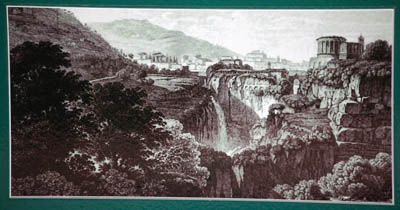
This is a photo of a large laminated reproduction of a 17th century engraving posted on a board near the Temple of Vesta.
The original copy of the following 5 engravings have been donated by us to the Hector Berlioz Museum and they hold the copyright for them.
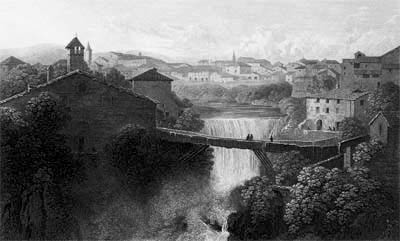
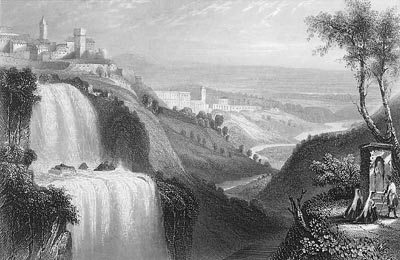
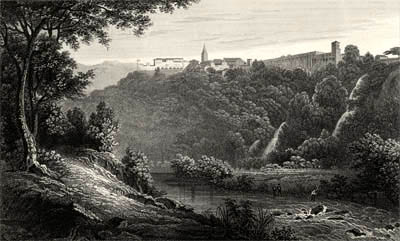
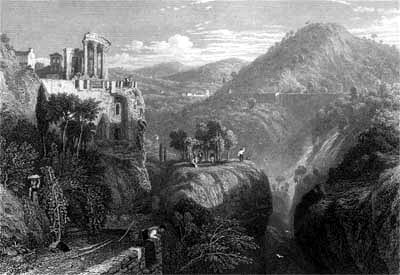
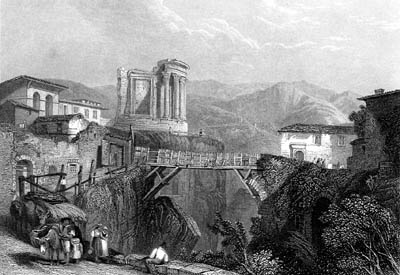
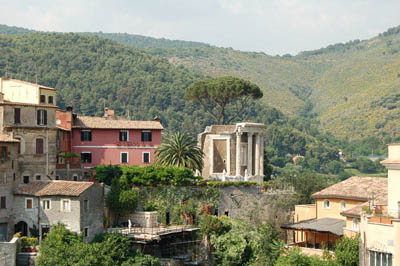
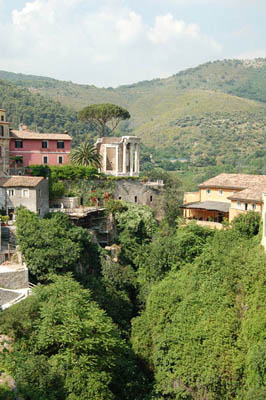

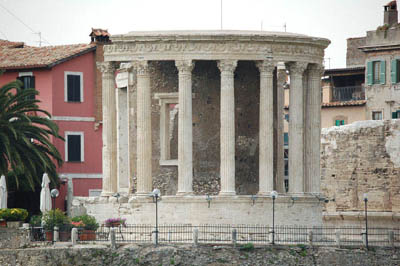
![]()
© Michel Austin and Monir Tayeb for all the pictures and information on this page.
Copyright notice: The texts, photos, images and musical scores on all pages of this site are covered by UK Law and International Law. All rights of publication or reproduction of this material in any form, including Web page use, are reserved. Their use without our explicit permission is illegal.